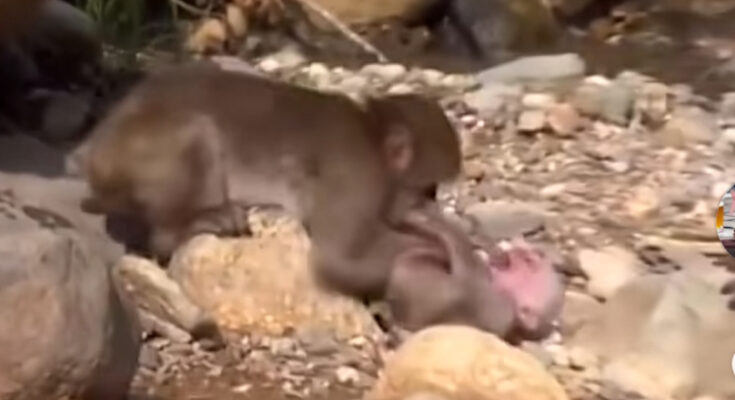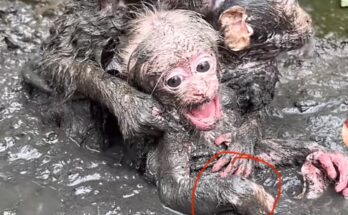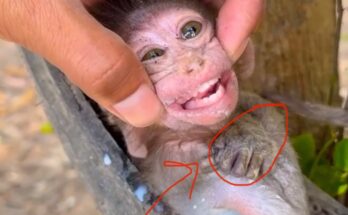In a rare and disturbing incident captured by locals in a rural village in India, a group of monkeys was seen beating a lone, stray monkey to death. While shocking to human observers, this incident sheds light on the complex—and sometimes violent—social dynamics that exist in primate communities.
The event reportedly occurred when an unfamiliar monkey entered the territory of a tightly bonded troop. Witnesses say the outsider was quickly surrounded, harassed, and eventually attacked by the resident monkeys. Despite attempts to flee, the lone monkey was chased down and fatally beaten. For many who witnessed it, the act resembled calculated mob behavior rather than a simple territorial dispute.
So why would animals that are often seen as playful, intelligent, and social turn on one of their own with such brutality?
Experts in primate behavior point out that monkeys live in highly structured social groups where hierarchy, territory, and alliances play crucial roles. When an unfamiliar monkey enters a troop’s territory, it may be seen as a threat—to food resources, mating opportunities, or social order. In some cases, aggression serves to reinforce dominance or protect the group’s cohesion.
Dr. Anjali Suresh, a primatologist at the Wildlife Behavior Institute, explains, “While we tend to anthropomorphize monkeys as cute and funny, they operate in a world with strict social rules. An outsider, especially one that doesn’t submit or show submissive behavior, can provoke extreme responses.”
While violence between rival troops is well-documented, intra-species killing is still relatively rare and often occurs under stress—such as food shortages, overcrowding, or disruption caused by human encroachment. In many rural and semi-urban parts of Asia, rapid development has led to habitat loss, bringing wild animals into closer contact with human settlements—and with each other.
Some observers have suggested that the incident may have been triggered by competition for scarce food or resources. Others speculate the stray monkey could have been previously exiled from its own troop and, in desperation, attempted to integrate with another group—only to be violently rejected.
For those living near the scene, the event has sparked concern. “We’ve always fed the monkeys and thought of them as harmless,” said a local villager. “But seeing them act this way makes you realize they have their own laws and violence.”
While tragic, the incident offers a rare glimpse into the darker aspects of animal social behavior. It serves as a reminder that nature, even among familiar animals like monkeys, is not always peaceful—and that human activities may be indirectly escalating such conflicts.
As we continue to share space with wildlife, understanding their behaviors—and respecting their boundaries—will be increasingly important.



